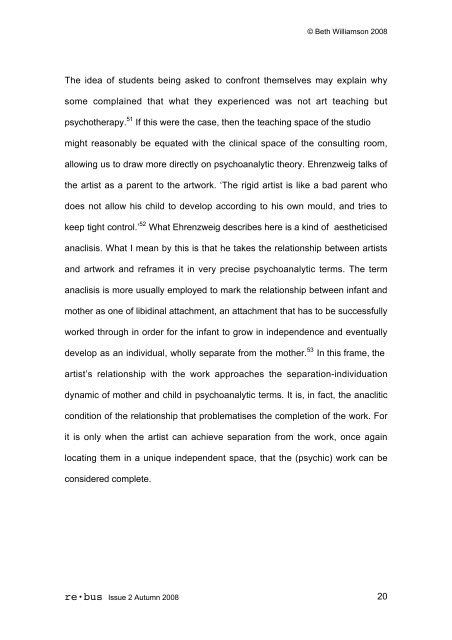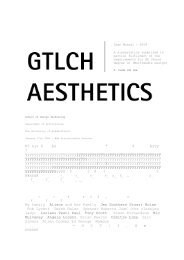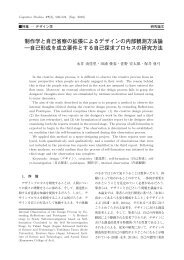Williamson
Williamson
Williamson
Create successful ePaper yourself
Turn your PDF publications into a flip-book with our unique Google optimized e-Paper software.
© Beth <strong>Williamson</strong> 2008<br />
The idea of students being asked to confront themselves may explain why<br />
some complained that what they experienced was not art teaching but<br />
psychotherapy. 51 If this were the case, then the teaching space of the studio<br />
might reasonably be equated with the clinical space of the consulting room,<br />
allowing us to draw more directly on psychoanalytic theory. Ehrenzweig talks of<br />
the artist as a parent to the artwork. ‘The rigid artist is like a bad parent who<br />
does not allow his child to develop according to his own mould, and tries to<br />
keep tight control.’ 52 What Ehrenzweig describes here is a kind of aestheticised<br />
anaclisis. What I mean by this is that he takes the relationship between artists<br />
and artwork and reframes it in very precise psychoanalytic terms. The term<br />
anaclisis is more usually employed to mark the relationship between infant and<br />
mother as one of libidinal attachment, an attachment that has to be successfully<br />
worked through in order for the infant to grow in independence and eventually<br />
develop as an individual, wholly separate from the mother. 53 In this frame, the<br />
artist’s relationship with the work approaches the separation-individuation<br />
dynamic of mother and child in psychoanalytic terms. It is, in fact, the anaclitic<br />
condition of the relationship that problematises the completion of the work. For<br />
it is only when the artist can achieve separation from the work, once again<br />
locating them in a unique independent space, that the (psychic) work can be<br />
considered complete.<br />
re·bus Issue 2 Autumn 2008 20





